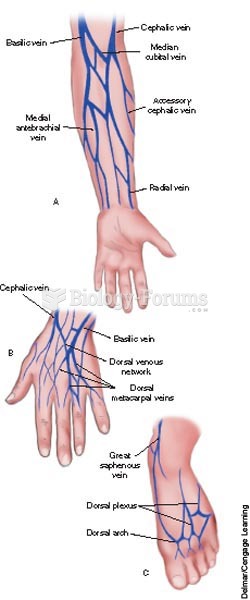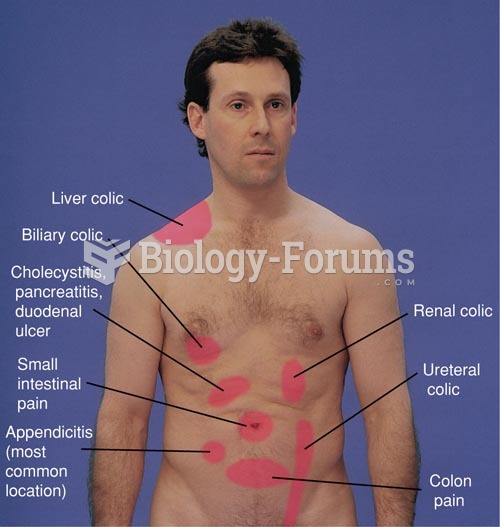This topic contains a solution. Click here to go to the answer
|
|
|
Did you know?
After a vasectomy, it takes about 12 ejaculations to clear out sperm that were already beyond the blocked area.
Did you know?
Street names for barbiturates include reds, red devils, yellow jackets, blue heavens, Christmas trees, and rainbows. They are commonly referred to as downers.
Did you know?
Atropine, along with scopolamine and hyoscyamine, is found in the Datura stramonium plant, which gives hallucinogenic effects and is also known as locoweed.
Did you know?
Calcitonin is a naturally occurring hormone. In women who are at least 5 years beyond menopause, it slows bone loss and increases spinal bone density.
Did you know?
By definition, when a medication is administered intravenously, its bioavailability is 100%.
 Peripheral veins used in intravenous therapy; A, forearm; B, dorsum of the hand; C, dorsal plexus of
Peripheral veins used in intravenous therapy; A, forearm; B, dorsum of the hand; C, dorsal plexus of
 The relative influence of heredity and the environment in human behavior has fascinated and plagued ...
The relative influence of heredity and the environment in human behavior has fascinated and plagued ...





